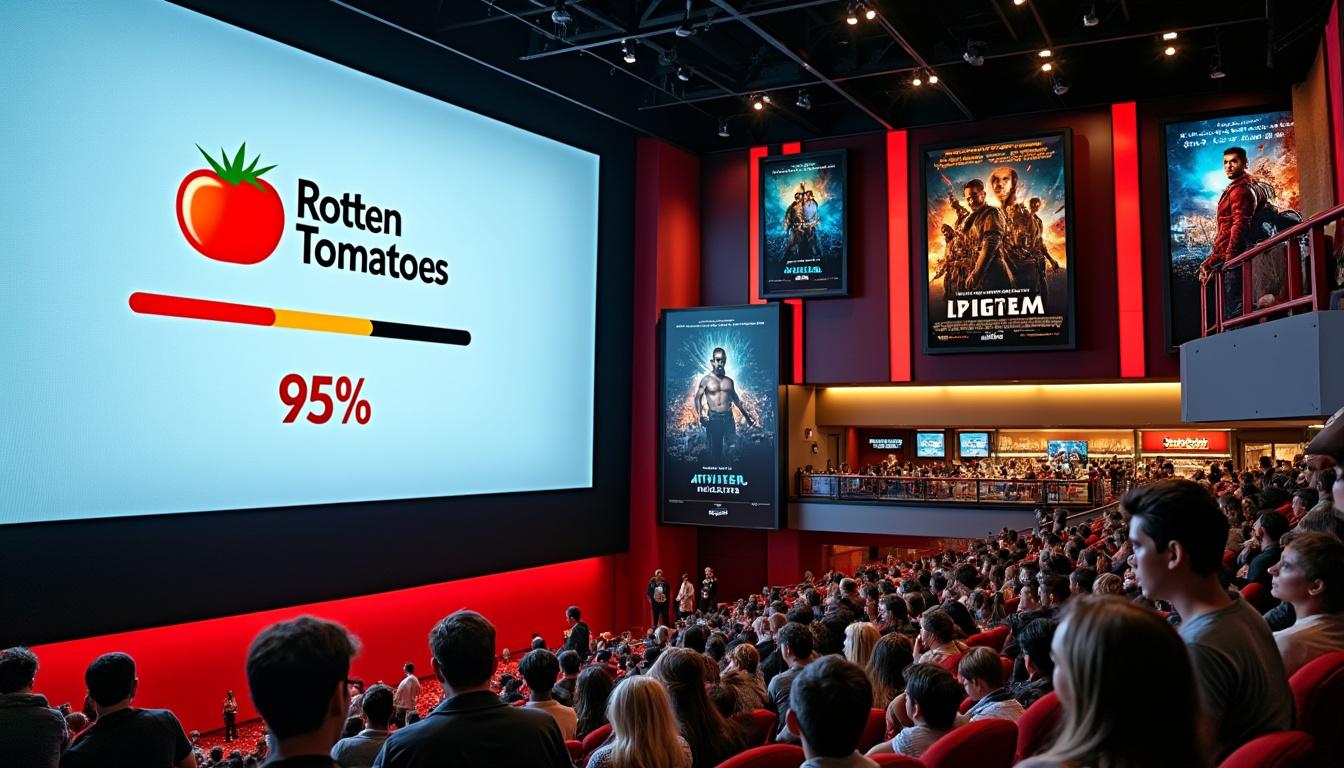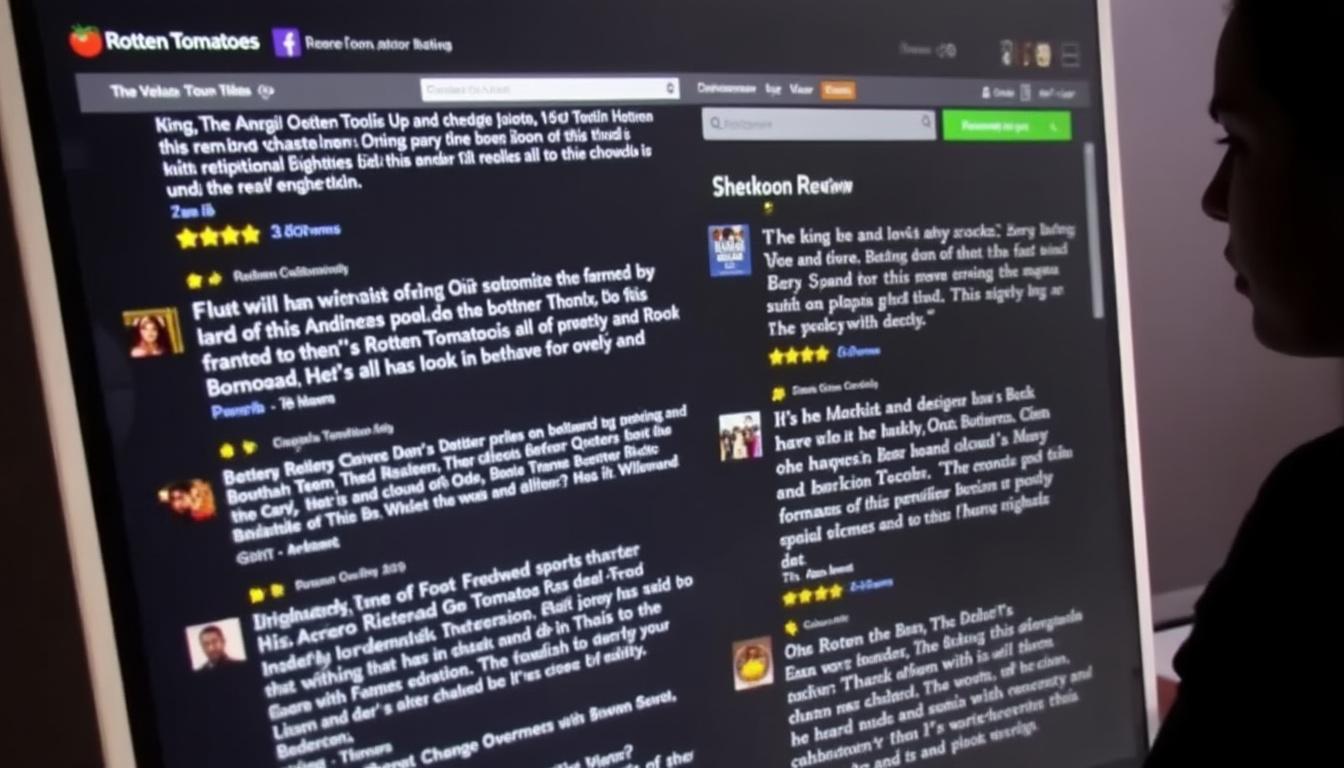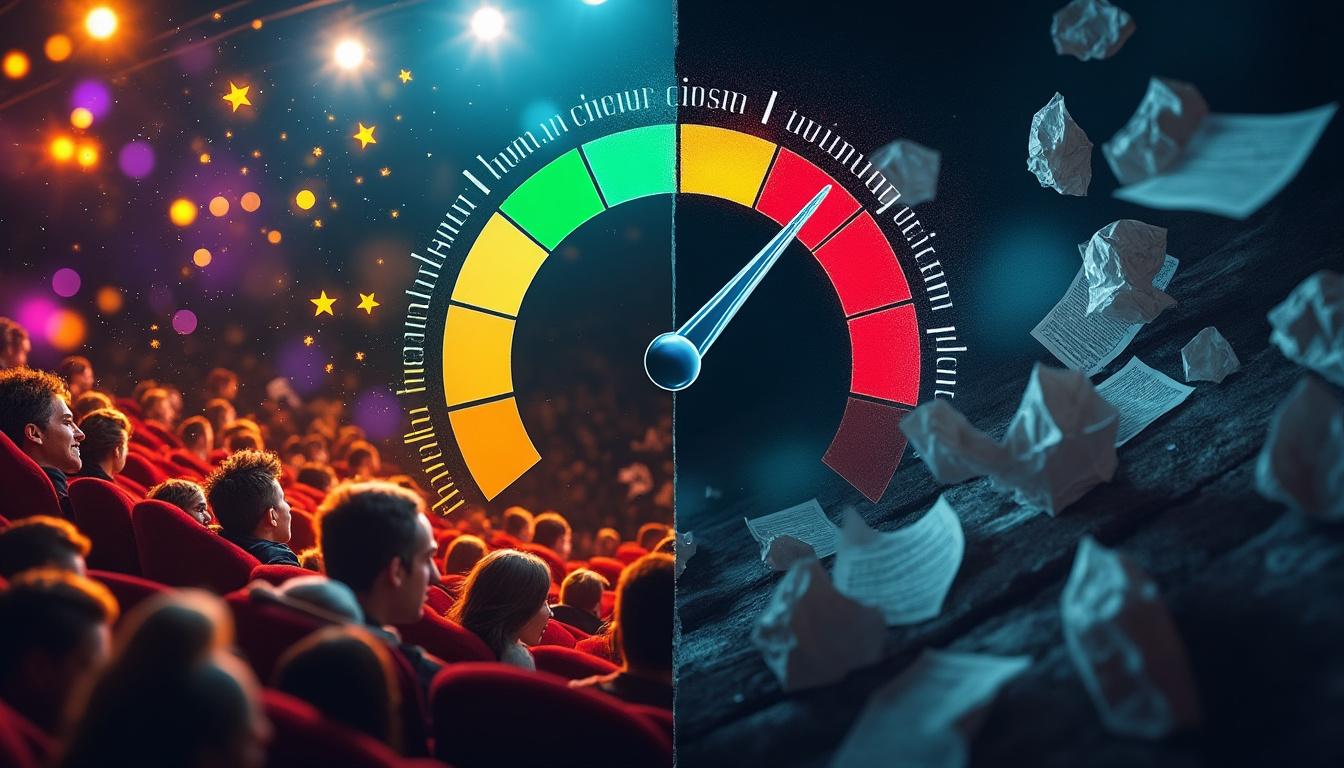The film industry thrives on reviews, shaping the public’s perception even before a movie hits theaters. The influence of Rotten Tomatoes as a widely embraced review aggregator highlights the dichotomy between critics and audience reception. This article explores how both laudatory and scathing critiques can significantly impact a film’s overall score on Rotten Tomatoes, as well as its box office success. Featuring Spike Lee’s latest work, *Highest 2 Lowest*, this examination of reviews offers insights into what makes a film resonate with critics and audiences alike.
The Mechanics of Rotten Tomatoes: Understanding the Tomatometer
Rotten Tomatoes operates on a unique rating system that evaluates films based on aggregated reviews from critics and audiences. At the heart of this system is the Tomatometer, which represents the percentage of positive reviews a film receives. The score starts to take shape after five reviews, tallying the positive versus negative critiques. This binary categorization simplifies a film’s reception into a digestible format, but it raises questions about the usefulness of an oversimplified score when assessing cinematic quality.
Critics’ reviews contribute significantly to a film’s Tomatometer score. A film deemed “certified fresh” features at least 75% positive reviews from critics, showcasing its standing among industry experts. In contrast, a lower score is often associated with notable dissent, perhaps underscoring discrepancies between critical and audience opinions. These reviews can vary widely in tone and content, from glowing praise to biting critiques. It becomes essential to explore how diverse perspectives shape a film’s cumulative reception.
- Positive Reviews: Highlight elements such as direction, acting, and storytelling.
- Negative Reviews: Point out flaws in pacing, character development, and overall engagement.
The recent release of *Highest 2 Lowest* is a prime example. This film garnered a Certified Fresh score of 92% on Rotten Tomatoes, illustrating a strong consensus among critics despite a mix of opinions. The dichotomy of reviews serves as a testament to the complex nature of how audiences interpret cinematic works. Chiefly, the dialogue surrounding Spike Lee’s direction and Denzel Washington’s performance underlines the film’s engagement level and its exploration of deeper themes, including power and legacy in contemporary society.

The Positive Impact of Critics: Lauding *Highest 2 Lowest*
Critics have been overwhelmingly supportive of *Highest 2 Lowest*, underscoring its ability to engage with viewers on multiple levels. Renowned critic Lindsey Bahr stated, “Highest 2 Lowest may not reach the heights of some of Lee’s best films, but it’s the kind of film that makes you hope Lee and Washington have more to make together.” By identifying themes such as moral conflict, the film’s artistic aspirations, and the strength of the performances, reviews like Bahr’s contribute positively toward its Rotten Tomatoes score.
Beyond individual acclaim, critics recognize the film’s broader cultural relevance. For instance, Barry Hertz from the Globe and Mail noted, “When Lee puts Washington in just the right scene, with just the right power dynamics and just the right nerve-rattling dialogue, the result is a thing of high art.” Such sentiments highlight not just the entertainment aspect but also the film’s philosophical underpinnings, which enrich its narrative layers and drive audiences to engage more deeply with the content.
The Role of Audience Reception: Conflicting Opinions
While critics largely endorse *Highest 2 Lowest*, audience feedback can yield a different outcome. The relationship between critic reviews and audience perceptions often leads to interesting contrasts. Negative audience feedback might arise from expectations that differ from what the film delivers, particularly if marketing emphasizes specific themes. The score on platforms like IMDb or Google Reviews may reflect these discrepancies, revealing how a film can resonate differently with general audiences compared to critics.
For example, some audience members may prioritize entertainment value over thematic exploration. In turn, if viewers perceive the work as dense or overly exploratory, their critiques may skew negative. This imbalance may manifest in lower user scores on IMDb or Amazon, which do not always align with the flushed state of the Tomatometer.
- Critics typically analyze a film’s artistic merit.
- Audiences focus on entertainment value and relatability.
- Divergence can lead to significant gaps between critic and audience approval ratings.
| Source | Rotten Tomatoes Score | IMDb User Score |
|---|---|---|
| Critics | 92% | 7.5/10 |
| General Audience | — | 5.6/10 |
The implications of these mixed reviews are far-reaching. A film like *Highest 2 Lowest* may achieve critical acclaim but still face hurdles at the box office if audiences find it less appealing. This phenomenon underscores how varying perceptions can impact a film’s overall legacy and future viewership.
The Art of Review: Balancing Positives and Negatives
Reviews serve as crucial touchpoints that help potential audiences form opinions before viewing. In such a competitive environment, how critics choose to articulate their thoughts can dramatically influence audience perception. The mix of praise and criticism is vital to providing a well-rounded perspective on a film’s strengths and weaknesses. While critical praise can elevate a film’s profile, negative reviews can serve as a counterbalance, highlighting potential weaknesses.
Some of the criticisms surrounding *Highest 2 Lowest* have called attention to its storytelling aspects. As noted by Martin Tsai of Critic’s Notebook, “It’s evident that ‘Highest 2 Lowest’ is more concerned with fan service than basic storytelling.” Such remarks carry weight and can contribute to audience skepticism, leading many to critically assess the film outside of the initial hype.
Impact of Fan Service on Reception
Fan service can be a double-edged sword for filmmakers. While catering to a dedicated fanbase often fosters immediate support, it can alienate broader audiences. In the case of *Highest 2 Lowest*, while dedicated followers of Spike Lee and Denzel Washington may relish familiar motifs, casual viewers seeking nuanced storytelling might feel left out. This discrepancy illustrates how films tailored for specific audiences may not achieve universal acclaim.
- Critical reviews highlight thematic depth.
- Negative reviews signal potential storytelling flaws.
- Fan feedback can vary based on expectations and preferences.
Rotten Tomatoes: A Double-Edged Sword for Filmmakers
Rotten Tomatoes wields significant influence in shaping movie reception, yet it is often viewed with skepticism. While a high score on the site can propel interest and ticket sales, low ratings can spell disaster for box office performance. This paradox encapsulates the challenges filmmakers face navigating the review landscape, where opinion varies dramatically across platforms like Fandango, CinemaScore, and Letterboxd.
Taking a closer look at these platforms, it’s essential to consider how audiences turn their ratings into actionable insights. Fandango, for instance, centers on ensuring access to critical discourse around popular films, while Letterboxd functions as a community for cinephiles to assess and review films on a more personal level. These variations in focus lead to different audience engagement levels, influencing how many choose to support films like *Highest 2 Lowest*.

Box Office Implications
The implications of Rotten Tomatoes scores resonate in real-world box office earnings. As observed in recent years, a Certified Fresh title is likely to dominate the box office, whereas films with negative reception can struggle to recoup production costs. In the case of *Highest 2 Lowest*, its impressive 92% score sets a positive trajectory, yet fluctuating audience ratings could still derail its financial success if they influence public perception. The complexities of this dynamic underscore the importance of matching critic acclaim with audience expectations to solidify long-term success.
- Certified Fresh titles often achieve strong box office performance.
- Negative audience reviews can impact overall reception.
- Matching film themes with audience preferences is crucial.
Critics’ collective voices, such as those heard in outlets like The New York Times and RogerEbert.com, carry immense weight in shaping how films like *Highest 2 Lowest* are perceived. This balance between critical and audience reviews informs industry watchers about market trends, ultimately impacting the kinds of films that get made and who makes them.
Bridging the Gap: Lessons for Filmmakers
To navigate the often tumultuous landscape of cinematic reviews, filmmakers must engage with both critics and general audiences. Films that strike a balance between artistic merit and audience appeal are likelier to succeed in the competitive market. By recognizing the significance of reviews from various platforms, directors can tailor their work to reach a wide audience without compromising their artistic vision.
Through films like *Highest 2 Lowest*, the film industry is reminded of the importance of seeking thoughtful critique while engaging with audience dynamics. By taking heed of the feedback provided in reviews, filmmakers can refine their approach and ensure their work resonates widely.
As *Highest 2 Lowest* prepares for its release, anticipation surrounds its potential impact on both critical and audience landscapes. As director Spike Lee continues to push boundaries in filmmaking, the responses garnered will undoubtedly contribute to an ongoing dialogue about how film critiques shape our cinematic experiences. This interplay between the best and worst reviews reveals an intricate dance that ultimately defines what audiences deem worthy of their time and investment.


